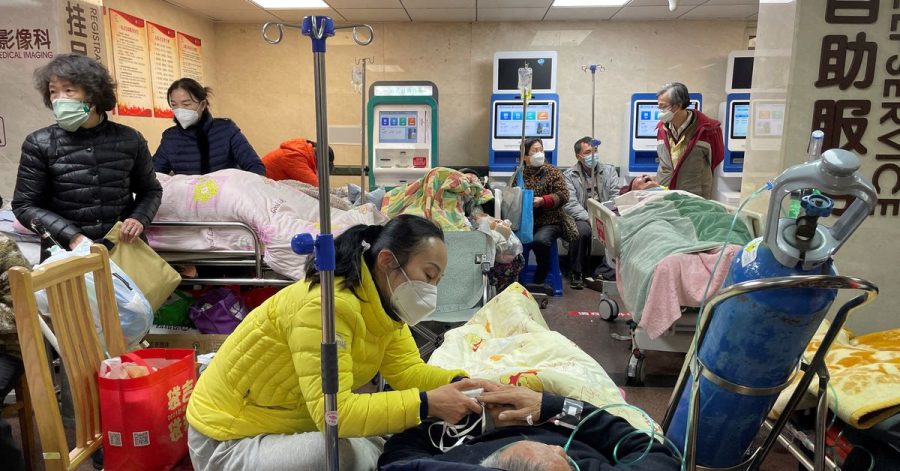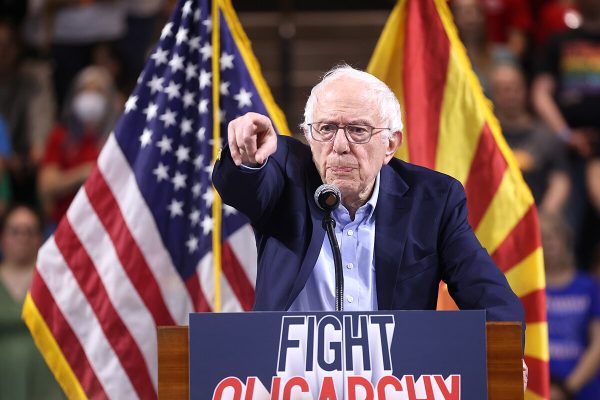China Ill-Prepared for the End of “Zero COVID”
Of the countless safety measures enacted and repealed by countries ill-equipped to deal with the outbreak of the COVID-19 pandemic, the Chinese government’s sudden termination of “zero COVID” policies is one of the most baffling decisions yet. China’s “zero COVID” policies originated in January 2020 following the outbreak of COVID-19 and proposed strict rules including federally-enforced quarantines in government-supervised facilities, a requirement to comply with extensive contact tracing and proof of recent negative test results in order to enter certain buildings. On Dec. 7, 2022, following roughly three years of strict government lockdown and quarantine measures, the Chinese government abruptly repealed their most strict “zero COVID” policies.
With the sudden end to “zero COVID,” the number of new cases have increased dramatically, from Oct. 1, 2022 with an average number of 867 new cases to an average of over 30,000 new cases during the week of Dec. 7, 2022. In the two months leading up to Jan. 29, 2023, roughly 10,000 new critical cases received medical attention daily.
The Chinese government was exposed for their failure to establish adequate healthcare infrastructure since hospitals, morgues and medication suppliers were all overwhelmed by the influx of patients in critical condition. A major reason behind this failure to establish the necessary healthcare supply-chain to handle and contain the amount of new cases was the large nation-wide protests by Chinese citizens expressing their frustration with the government’s inability to remove COVID-19 measures which infringe upon the public’s freedoms. In the eyes of the Chinese citizens, the detrimental effects of “zero COVID” on one’s quality of life outweighs the potential risks associated with the pandemic.
The protests (also known as White Paper Protests) were in response to a statement from President Xi Jinping on Nov. 11, 2022. Leading up to his statement to the press, there had been growing levels of discontent among Chinese citizens as strict “zero COVID” restrictions in other countries were lifted. In the statement, he says the country’s “zero COVID” policies will continue, at least in certain highly populated cities. By failing to address the public, the president’s statement to the press catalyzed the month-long protests by Chinese citizens, which led to the hasty removal of all national “zero COVID” regulations this past December. Not only did “zero COVID” policies spur public anger surrounding the restrictive nature of “zero COVID” on one’s quality of life, another popular theory as to why the government abruptly ended the precautions which were effective is Chinese officials were seeking a way to boost the economy.
Since the enactment of “zero COVID,” China’s economy had taken a hit due to government’s regulations on international trade, chains of supply and extensive quarantine requirements that hindered the availability of the Chinese workforce. According to the International Monetary Fund organization, this strategy has garnered positive economic growth with the Chinese economy expected to grow over 5% in the upcoming year compared to about 3% in 2022 as a result of the economic boom from the removal of trade barriers and quarantine laws. Despite expediting the country’s economy, as the number of active COVID-19 cases continues to surge, Xi’s decision to disband the country’s COVID-19 protocols without first establishing the necessary infrastructure to deal with future outbreaks appears completely misguided. Furthermore, when considering the pervasiveness of the omicron variant, a much more viral strain of COVID-19 than the original, there is a clear lack of anticipation and deliberation on the side of the Chinese government.
Although the public held disdain for the extensive amount of time China specifically underwent zero regulations, the efficacy of this method of stopping the spread has been proven. As of Feb. 12, 2023, there are 118,977 active cases in China, an increase of 2465% since Nov. 1, 2022. Slowly reopening all of the healthcare facilities may have allowed for the production and distribution of China’s vaccines and other medically related utilities to better keep up with the growing flow of inpatients with COVID-19. Instead, the scarcity of doctors and other medical professionals coupled with the low vaccination rates and lack of necessary medications revealed Xi’s lack of consideration for the Chinese Public.
Zachary Badalamenti, FCRH ’25, is a journalism major from Oakland, Calif.

Erynn Sweeney is a sophomore from Cypress, California, majoring in international political economy. She joined The Ram as a copy editor for Volume 105,...










































































































































































































